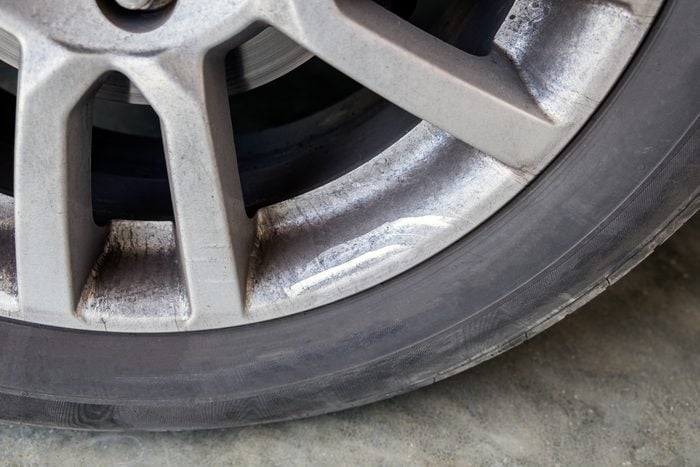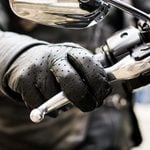What To Know About Brake Dust

Brake dust residue can be unsightly and damage brake hardware and expensive wheels. What is brake dust? We've got answers.
Our editors and experts handpick every product we feature. We may earn a commission from your purchases.
Decades ago, asbestos, an effective and inexpensive material for controlling heat friction during braking, was identified as a known human carcinogen. By the 1980s, auto manufacturers recognized this danger and stopped installing brake pads and shoes containing asbestos. Unfortunately, it’s still legal to import, sell or install aftermarket brakes and other car parts containing asbestos.
Several other composite substances produce asbestos-free brake friction material, but most leave behind unsightly and damaging brake dust. Here’s what you need to know.
On This Page
What Causes Brake Dust?
Brake dust is a normal byproduct of brake pads, brake shoes and cast-iron brake rotors. All release microscopic fragments of friction material and metal as they naturally wear.
Depending on the friction material, brake dust can be iron/steel particles, carbon, copper, brass, graphite, glass, rubber or other non-asbestos organic (NAO) compounds.
What Does Brake Dust Look Like?
Brake dust can appear as a blackish-grayish or reddish film on your wheels and braking components. Darker color brake dust comes from high-performing non-metallic NAO compounds. Iron particles in metallic and semimetallic brake friction material produce a rusty-reddish-color dust.
Brake dust usually has a fine, almost talc-like consistency. On highly polished or clear-coated wheels, it can almost feel like a liquid if you try to wipe it off with your finger. But don’t do this. If you do, you’ll scratch the finish.
Is Brake Dust Harmful?
Absolutely.
There is no safe level of asbestos exposure, so any brake dust containing asbestos is toxic.
Incredibly, although a known health risk factor, asbestos is not a banned substance. According to the World Health Organization, “about 125 million people in the world are exposed to asbestos at the workplace.”
Studies show even NAO-based brake dust containing heavy metals and fibers can damage human cells and contribute to air pollution and adverse health effects.
Brake Dust Cleaning
Try to clean brake dust from your wheels often. Metallic compounds and other composites are harsh corrosives that can quickly tarnish painted or clear-coated wheels. They also can permanently etch steel, alloy, aluminum or composite wheels and pit brake rotors if allowed to accumulate.
As brake dust mixes with rainwater, road salts and other contaminates, it can cause wheel stud threads to corrode, making it impossible to remove lug nuts when changing a flat tire.
It also may cause brake pads or shoes to grind or squeak, damage or warp disc brake rotors, or make brake drums and hardware rust. That severely decreases braking performance. The metal rust in brake dust can even damage wheel speed sensors that are critical for proper anti-lock brake operation.
When the wheels are cool, flush them with plenty of clean water. To protect the wheels when cleaning, use the appropriate brake dust cleaner and cleaning tools for your wheel type or finish.
How To Prevent Brake Dust
Brakes will always create some dust. Here are a few things you can try to limit brake dust buildup:
- Apply a DIY brake dust repellent/sealant to prevent corrosion from brake dust, dirt or road grime from damaging wheels.
- Have a professional apply an advanced clear, permanent ceramic coating. This high-tech finish creates a protective barrier that repels brake dust and other road contaminants while making wheels easier to clean.
- Consider installing ceramic brake pads. While costly, they provide excellent stopping power. They’re also quieter and produce little brake dust or rust. Check with your mechanic or dealer to see if your vehicle can benefit from this type of friction material.



